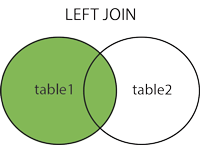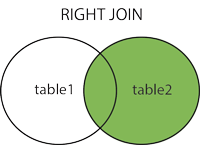👋🏾, welcome back.
Definition
- This clause is used to combine rows from two or more tables, based on a related column between them.
Different Types of SQL Joins
- INNER JOIN: returns records that have matching values in both tables
- LEFT(OUTER) JOIN: return all records from the left and the matched ones from the right table, the result is zero records from the right side, if there is no match.
- RIGHT(OUTER) JOIN: return all records from the right and the matched ones from the left table.
- FULL (OUTER) JOIN: returns all records in both left and right tables.
Types
SQL INNER JOIN Keyword
SELECT column_name(s)
FROM table1
INNER JOIN table2
ON table1.column_name = table2.column_name;

SQL LEFT (OUTER) JOIN Keyword
SELECT column_name(s)
FROM table1
LEFT JOIN table2
ON table1.column_name = table2.column_name;

SQL RIGHT (OUTER) JOIN Keyword
SELECT column_name(s)
FROM table1
RIGHT JOIN table2
ON table1.column_name = table2.column_name;

SQL FULL OUTER JOIN Keyword
- This keyword returns all records when there are a match in left (table1) or right (table2) table records.
- Full outer join can potentially return very large result-sets.
- The
FULL OUTER JOINkeyword returns all matching records from both tables whether the other table matches or not.
SELECT column_name(s)
FROM table1
FULL OUTER table2
ON table1.column_name = table2.column_name
WHERE condition;
SQL Self Join
- It is a regular join, but the table is joined with itself.
SQL UNION Operator
- This operator is used to combine the result-set of two or more SELECT statements.
- every SELECT statement in UNION must have the same number of columns.
- columns must have the same data types.
- columns in every SELECT statement must also be in the same order.
